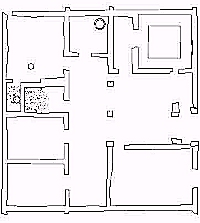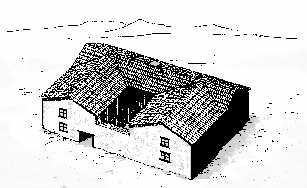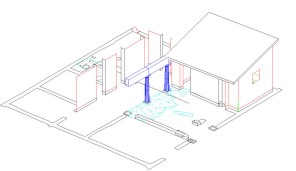
Figure 2: Plan of 4th century BC house from Olynthus
The problem is more serious for the non-specialist, the viewer who will accept what he or she sees as the truth, not simply one scholar's version of it (Miller and Richards, 1995). We all know that even the best and most thoroughly studied monuments like the Parthenon (as at http://www.indiana.edu/~kglowack/athens/images/07.017.JPG for example) are not and cannot ever be fully known. We can know a great deal, but we cannot know all the intricacies, and we cannot know which things we have got wrong. We will not agree about those things, though the range of disagreement will surely diminish over time. But we do know that we cannot know it all. So, I repeat, we must take care how we use compelling technology that implies full knowledge.
The problem is actually surprisingly acute for specialists as well. Dr Martin Emele of the Hochschule at Karlsruhe has been working with the excavators on VR and visualisations at Çatal Hüyük and has said, 'The more advanced the level of technology used for the reconstruction, the greater the belief in its authenticity. Surprisingly, this applies to both the audience and the creators. Paradoxically, even scientists still fall for the magic of a near-perfect visualisation of images of the past and are susceptible to the belief in the seeming infallibility of the objective computer.' (Emele 2000) Dr Emele goes on to point out that even scholars endow the computer with a kind of impartial intelligence that is misleading in the extreme.

Figure 2: Plan of 4th century BC house from Olynthus
The problem of the persuasive image is not new. A student working with me two years ago set out to reconstruct, with CAD, one of the houses from Olynthus (a 4th century BC Greek city). She started with a plan (Fig. 2) and some familiarity with the reconstructions that have been published (e.g. Fig. 3). She was shocked to realise that the evidence could not support the reconstructions.

Figure 3: Reconstruction of a 4th century BC house from Olynthus (after Robinson and Graham 1938)
Figure 4 was as far as she could get with a 3D model based on the plan in Figure 2 (Figure 3 is a different structure). At that point she realised that the project was far more complex than she had expected and would require her to analyse the structure from the ground up, in enormous detail and without real evidence. The first evidence of that was the difficulty of making the columns fit with the roof of the dining room and with the balcony at the same time. A good reconstruction is not impossible, but it would involve as much conjecture as fact, something that came to the student as a shock.

Fig. 4: Beginning of a CAD reconstruction of the house shown in Fig.
2. Note that a problem with the meeting of the roof and the lintel
over the columns has already occurred at this point.
© Internet Archaeology
URL: http://intarch.ac.uk/journal/issue8/eiteljorg/eit3.html
Last updated: Tue Aug 22 2000